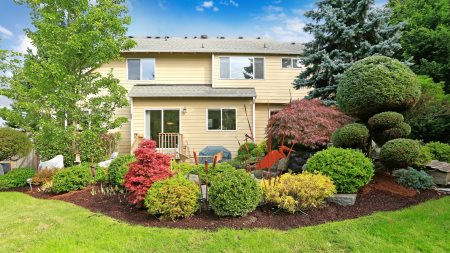Any agent will tell you that entering any home must be done with due consideration and respect to those that live there. When that home is Islamic, there are also socio-cultural and religious rules that should be honoured, regardless of an individual’s personal beliefs, for it is within their homes that Muslims often perform religious rituals and practices.
There are many practical reasons that define how a traditional Muslim home is designed, yet in contemporary society, and because of migration and integration into other cultures over 14 centuries, Muslims have adapted without losing the significance of their religious prescriptions. Those prescriptions are derived from Islamic Sharia Law, which in turn are sourced from the Quran - the revelations of Allah to Prophet Muhammad. Muslims regard the Quran as the literal word of God spoken through the actions of his messenger, the Prophet Muhammad.
Some of those revelations embody how Muslims use their domestic space with regards to , construction, orientation and even ritualisation. These, but more so the latter, are applicable whether the home is an apartment or a house, because when performing prayers at home, blessings are bestowed upon those within and the home itself.
Traditionally Muslim homes are reflective of the practice of humility, which is generally based on three main principles: privacy and safety; modesty; and hospitality. Such a traditional home will be evident in design; for example, the positioning of entrance doors away from main streets and not directly facing opposite neighbours, for to look into another’s home is an invasion of privacy. For the same reason windows ideally do not face local tenants.
Internally the design may include gender-segregated spaces and service zones, usually linked by courtyards that can be public or semi-public spaces. Typically the courtyards are one step lower than the interior of the home and often have a fountain in the centre that may double up for washing prior to prayer. One of the most scared areas is the musallah, a space designed for daily prayers, meditation, contemplation and religious discussion, and it is this space upon which no visitor should intrude unless invited to do so.
Entering the Muslim home
For those preparing to enter the Muslim home for the first time, the most important understanding is knowing the difference between ‘haram’ and ‘halal’, two Arabic words that define what is acceptable or lawful to a Muslim (halal), and what isn’t (haram). They can also be defined as the opposites ‘clean’ and ‘unclean’, for example pork and alcohol are considered ‘haram’, in other words prohibited.
Cleanliness is an essential characteristic of a Muslim, who in achieving this spends much time purifying not just the home, but body and clothing too.
On entering their home, many Muslims remove their shoes at the door. This further emphasises the importance of cleanliness, for the soles of shoes are considered unsanitary. It is best to follow any lead shown by the household, or if in doubt, ask the home dweller what is the preference. If the wearing of shoes is allowed, it is advisable to ensure the shoes are clean from dirt.
There is yet further etiquette that some Muslim’s follow, which is to enter or leave their homes with the right foot first, which was the tradition of the Prophet Muhammad. Similarly if you wish to observe another Muslim tradition, stand to the right or left of the door, for the centre position is reserved for ‘The Messenger of Allah'.
It is acceptable to take a gift when visiting but mindfulness must be applied to haram and halal. For example dates, nuts, flowers, halal confectionery, and Itar (Muslim perfumes) will be well received. If uncertain, present the gift with a list of ingredients.
Greetings
It is not allowed, in a traditional Muslim home, for men to touch women. It is worth learning, therefore, the traditional greeting which is a-sa-laam-a-lei-kum (peace be upon you). However, should a woman present her hand, it is acceptable to shake it. If she doesn’t, place your hand on your chest as a gesture of greeting.
The offer of food
Regardless of the reason for entering a Muslim home, you may well be offered food or to join the family in a meal. In some households women eat separately from men. Before eating, traditional Muslims typically say ‘Bismillah’, meaning in the name of God.
Note that Muslims eat with their right hand and often serve meals using a common plate. You will eat from the portion facing you. You are not obliged to eat all that faces you but should you do so, it is likely your ‘section’ will be generously replenished.
Tea and coffee are usually served or offered as the last gesture before you depart. Leaving before may be considered offensive. Be warned that in some Muslim homes, particularly in the case of Moroccans, the tea may be very sweet or mint-flavoured.
Prayers, Ramadhan and culturally significant days
Muslims observe five daily compulsory prayers. The dawn prayer is called Fajr; Midday is Dhurh; late afternoon, Asr; Maghrib is after sunset; and Isha in the late evenings. Its courtesy to be respectful of those times when visiting.
The ninth month of the Islamic calendar presents Ramadhan, which involves a month of fasting between sunrise and sunset. Breaking of the fast is usually done with family and friends where food is shared and also distributed to the needy.
Eid-ul-Fir follows Ramadan on the first day of the following month. This day is usually spent in prayer within mosques or in the home, as well as visiting friends and family.
Most Muslims do not mind if you don’t follow the rules that are applied in their homes but it is considered a sign of respect if you make an attempt to abide by them. Where you feel uncertain, it is recommended that you either ask what practices your guest would like to see you apply, or simply follow the actions of the host family.




